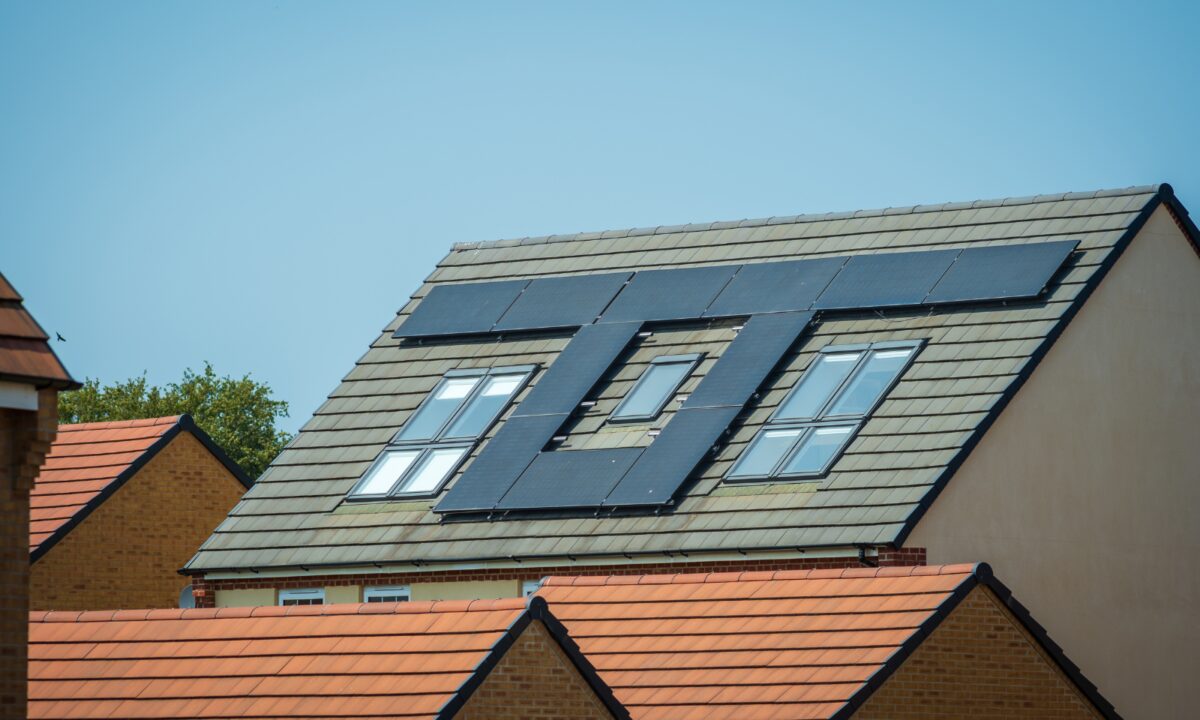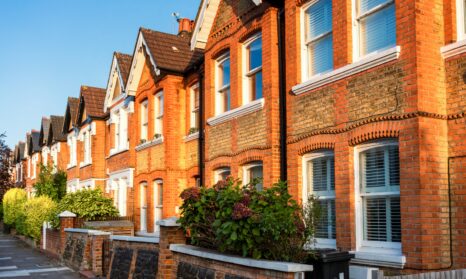Planning to fail? The Future Homes Standard and new local energy efficiency rules risk blocking the path to net zero
The Government’s climate change adviser, the Committee on Climate Change (CCC), has assessed that all new buildings must be "zero carbon" by 2025 if the UK is to meet its legally binding decarbonisation targets.
The Government finally responded to this challenge last week. But instead of setting a clear path to net zero, its watered-down plans for the energy efficiency of new homes, alongside new rules that seem to make it harder for local authorities to set more ambitious standards, have caused shock and dismay.
On 13 December, we saw the launch of the Future Homes Standard (FHS) consultation, along with a new Written Ministerial Statement (WMS) on local energy efficiency standards. Green industry groups have been disappointed by the lack of ambition shown in the FHS – which is even less ambitious than the Government’s draft FHS specification from 2021 – while the WMS has left local authorities reeling from a new edict that "Government does not expect plan-makers to set local energy efficiency standards for buildings that go beyond current or planned buildings regulations".

The scale of the challenge facing the UK’s built environment is huge. The sector accounts for over 30% of the UK’s carbon emissions, and the UK has some of the leakiest housing stock in Europe, which results in much higher energy bills for homeowners and tenants. The UK has the lowest level of heat pump installations per capita of all neighbouring countries. And even before last year’s energy price rises, the Green Alliance estimated that more than 3,000 people die every year in the UK due to the cold, unable to heat their inefficient homes.

The Future Homes Hub presented government with five different options to make new homes more sustainable, each requiring different levels of air tightness, energy efficiency, and onsite generation of renewable energy. Disappointingly, the Government has chosen to consult on the two least ambitious options, leaving the CCC’s net-zero recommendation in tatters.
Over the coming weeks, Bioregional will collaborate with industry peers to establish exactly what the Future Homes Standard must achieve if it is to be in line with the UK’s carbon reduction targets.
We know that higher standards are eminently possible
While the FHS consultation contains some helpful clarifications – such as the expectation that gas, hybrid and hydrogen-ready boilers will not comply in the proposed new ‘Home Energy Model’, its approach is fundamentally flawed:
- The FHS doesn’t go anywhere near far enough on airtightness, leaving ‘U-values’ the same as today and leaving notional airtightness the same as it has been for 10 years in one of the two options proposed, and with only a minor airtightness improvement in the other option,
- The FHS doesn’t meet the space heat demand set out as necessary by the Committee on Climate Change’s "Housing fit for the future" report from 2019. And this report was published before the legislated carbon target was uplifted to net zero by 2050 – so there’s a strong case for going even further,
- Future Homes Hub calculations indicate that the proposed space heat demand specs (21-52kWh/m2/year) do not deliver what is necessary (15-20kWh/m2/year) in any of the house types. To meet the UK’s net-zero targets, all new homes should meet their own needs by matching their energy use with renewable generation, and they won’t be able to do that without having significantly better fabric. Due to this poor performance in space heat demand, we believe the FHS consultation is wrong to say that these new proposed specs would avoid the need for future retrofit,
- Solar PV is included within only one potential option due to the perceived cost – and in insufficient quantities to match a home’s energy demand,
- There’s a lack of consideration for consumer costs – the FHS consultation (table 4.2) indicates that one of the proposed options would have energy bills twice as high (£1,220) as a home built to today’s existing standards (£640). This is camouflaged in disingenuous commentary that the running cost will be lower than that of a typical existing home – this is irrelevant to the performance of a new build, given that much of the UK’s existing homes are old and energy-inefficient,
- The language compares measures of PV, fabric improvements and heating systems against each other, instead of viewing them all as necessary within a whole-building approach.
We echo the thoughts of both Passivhaus Trust, which describes the FHS as "a missed opportunity to address fuel poverty and the climate crisis" and the UK Green Building Council, which observed that the standard would "deliver ‘future’ homes from 2025 at a lower standard than many homes already built today."
We know that higher standards are eminently possible. Reports such as the Essex Net Zero Policy Study show that houses can achieve excellent targets for space heat demand and energy use intensity, while also having sufficient solar PV on-roof to reach net zero. This is echoed in Cornwall Council’s Climate Emergency Development Plan Document, which also shows that houses meeting higher standards can be built using products that exist today, for an approximate cost uplift of just 2-4%. Both the Central Lincolnshire and Greater Cambridge evidence bases that Bioregional worked on, show that buildings under four storeys can accommodate sufficient solar PV to meet net-zero targets.
Built examples such as Springfield Meadows, a One Planet Living Global leader, and the Goldsmith Street development for Norwich City Council are just two projects that achieve performance standards that are already beyond those proposed within the FHS.

The second announcement that government made last week was a genuine shock. It states that any local planning policy that proposes energy efficiency standards beyond current or planned building regulations “should be rejected” by planning inspectors, unless it is supported by a “well-reasoned and robustly costed rationale” that ensures new development remains viable and, crucially, that such a policy must be expressed as a percentage increase in the Target Emission Rate (within Building Regulations) and should be calculated using SAP.
This is problematic for two reasons. First, Building Regulations measure only 'regulated' emissions (from 'fixed' services and systems such as heating, cooling, and lighting) and exclude ‘unregulated’ emissions (from appliances and electrical items, including those integral to a building’s operation), which make up a significant proportion of a building’s energy use. The second problem concerns methodology: the Target Emission Rate is not an energy efficiency metric at all, and the SAP calculation method is known to be very inaccurate in its predictions of buildings’ actual energy performance, especially in thermal efficiency (a phenomenon known as the energy performance gap).
This appears to block local planning authorities from following in the footsteps of adopted local plans that use far more effective metrics for energy efficiency, such as 'space heat demand' and 'energy use intensity', as recommended by the CCC to meet the UK’s legislated carbon budgets and net-zero target by 2050.
If national policy was sufficient to reach net zero, this wouldn’t be a problem. Coupled with the Government’s plans for the FHS, it’s a disaster, making it much harder for local authorities to create true net-zero local plans in line with UK carbon budgets.
The Government presents a false dichotomy. Best-in-class sustainable homes are cheaper investments in the long term, cheaper for residents to run, and less costly for our planet.
By our interpretation, the 2023 WMS still undermines or contradicts other pieces of legislation and national policy in many areas. Key examples of national legislation and policy that are undermined by the WMS are:
- Local plans have a legal duty to ensure that development in their area mitigates climate change (Planning & Compulsory Purchase Act 2004 Section 19),
- The Climate Change Act 2008 requires net zero by 2050 and also interim five-yearly carbon budgets – both are legally binding,
- The National Planning Policy Framework makes clear the planning system should "support the transition to a low carbon future … It should help to: shape places in ways that contribute to radical reductions in greenhouse gas emissions ... In line with the objectives and provisions of the Climate Change Act 2008." This stipulation remains in the new version of the NPPF released on 19 December.
Beyond these contradictions, our headline takes on the 2023 WMS are:
- It places far too much weight on grid decarbonisation, resulting in missed opportunities to both make homes as efficient as they could be,
- It does not mention renewable energy local policies,
- It does not mention embodied carbon – estimated to account for 20% of built environment emissions, or one in 10 tonnes of all UK climate emissions.
The Government says it wants "to strike the best balance between making progress on improving the efficiency and performance of homes whilst still wanting to ensure housing is built in sufficient numbers to support those who wish to own or rent their own home".
This presents a false dichotomy. Best-in-class sustainable homes are cheaper investments in the long term, cheaper for residents to run, and less costly for our planet.
We are in a climate and ecological emergency. Homebuilders and local authorities must be empowered to ensure that the UK gets buildings fit for the future – and fast.
If you’re an industry peer and would like to be part of a working group that will shape a collective response to government, please get in touch below.








